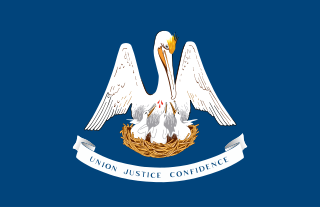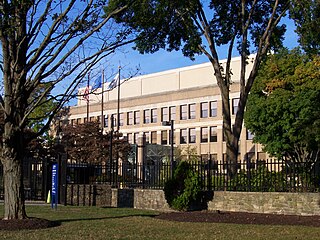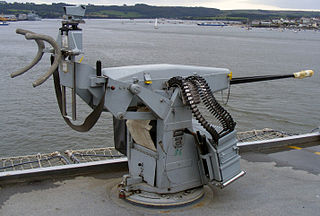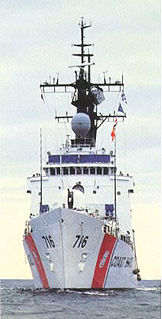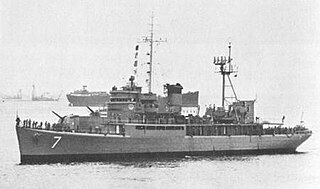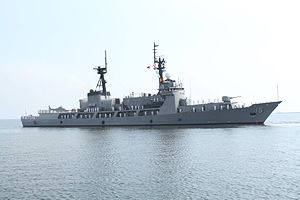 BRP Gregorio del Pilar (PS-15) | |
| Name: | BRP Gregorio del Pilar |
| Namesake: | Gregorio del Pilar |
| Acquired: | May 13, 2011 |
| Commissioned: | December 14, 2011 |
| Maiden voyage: | July 18, 2011 |
| Homeport: | Subic Bay Freeport Zone |
| Identification: |
|
| Nickname(s): | BRP Goyo, BRP Goryo, BRP GDP |
| Status: | Active |
| Notes: | Current Flagship of The Philippine Navy |
| Badge: | 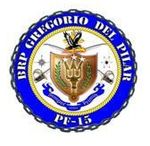 |
| General characteristics | |
| Class and type: | Gregorio del Pilar-class frigate |
| Displacement: | 3,250 tons |
| Length: | 378 ft (115 m) |
| Beam: | 43 ft (13 m) |
| Draft: | 8.75 ft (2.67 m) |
| Propulsion: |
|
| Speed: | 29 knots (54 km/h) |
| Range: | 14,000 nautical miles (25,900 km) |
| Endurance: | 45 Days |
| Boats & landing craft carried: | 2 × RHIB |
| Crew: | 85 |
| Sensors and processing systems: |
|
| Electronic warfare & decoys: | 2 × Mk.36 Super Rapid Blooming Offboard Countermeasures (SRBOC) Chaff and Decoy Launching System Contents
|
| Armament: | |
| Aircraft carried: | 1 × AgustaWestland AW109 Power naval helicopter [4] |
| Aviation facilities: | retractable hangar and flight deck |

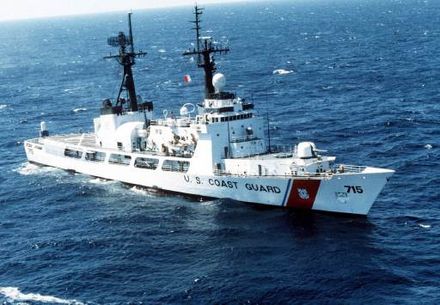
BRP Gregorio del Pilar (PS-15) is a offshore patrol vessel of the Philippine Navy and the lead ship of her class. She was the second ship of the Philippine Navy to be named after Gregorio del Pilar, a Filipino revolutionary general known for his role at the Battle of Tirad Pass. She was originally designated as "PF-15" from 2011 to mid-2016 when the PN adopted a new code designation system, re-designating her to "FF-15" and in 2019, PN redesignated her to PS-15 and downgraded the status of the class from frigate to offshore patrol vessel.

The Philippine Navy is the naval warfare service branch of the Armed Forces of the Philippines. It has an estimated strength of 24,000 active service personnel, including the 7,500-strong Philippine Marine Corps. It shares the responsibility of patrolling the maritime borders with the Philippine Coast Guard, its former attached unit until the latter became a separate maritime law enforcement agency on 1998.
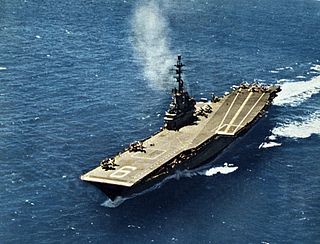
The lead ship, name ship, or class leader is the first of a series or class of ships all constructed according to the same general design. The term is applicable to military ships and larger civilian craft.

Gregorio Hilario del Pilar y Sempio was a Filipino general of the Philippine Revolutionary Army during the Philippine–American War.
From 1967–2011 the ship was a Hamilton-class high endurance cutter of the United States Coast Guard that was named USCGC Hamilton (WHEC-715). The U.S. decommissioned the cutter on March 28, 2011 and the Philippines acquired it under the Excess Defense Articles and the Foreign Assistance Act [5] and is one of three ex-US Coast Guard Hamilton-class cutters to serve the Philippine Navy. [6]

The Hamilton-class cutter was the largest class of vessel in the United States Coast Guard until replaced by the Legend-class cutter, aside from the Polar-class icebreakers. The hull classification symbol is prefixed WHEC. The cutters are called the Hamilton class after their lead ship, or "Secretary class" because most of the vessels in the class were named for former Secretaries of the Treasury.

The designation of High endurance cutter (WHEC) was created in 1965 when the United States Coast Guard adopted its own designation system. High endurance cutters encompass the largest cutters previously designated by the United States Navy as gunboats, destroyer escorts, and seaplane tenders. The term High Endurance Cutter may refer to any of five individual ship classes that have seen service in the Coast Guard.

The United States Coast Guard (USCG) is the coastal defense and maritime law enforcement branch of the United States Armed Forces and one of the country's seven uniformed services. The Coast Guard is a maritime, military, multi-mission service unique among the U.S. military branches for having a maritime law enforcement mission and a federal regulatory agency mission as part of its mission set. It operates under the U.S. Department of Homeland Security during peacetime, and can be transferred to the U.S. Department of the Navy by the U.S. President at any time, or by the U.S. Congress during times of war. This has happened twice: in 1917, during World War I, and in 1941, during World War II.

